Usually, when you notice a change in your nails or toenails, your first instinct is to go to the pharmacy for antifungal ointment. However, the reasons for such changes can be completely different, moreover, non-fungal diseases of the nails or toenails sometimes act only as symptoms of other destructive processes in the body.
Causes of unhealthy nails
Normally, nails should be smooth, not dense and pink in color. If it changes color, shape, becomes brittle and fragile, the nail plate partially or completely moves away from the phalanx of the finger, this may indicate the presence of the following problems:
- improper nail and toenail care;
- failure to comply with hygiene regulations;
- the presence of infectious diseases or parasites in the body;
- injury;
- normal damaging effects of hazardous substances;
- congenital anomalies that can only manifest over time;
- organ system diseases - cardiovascular, nervous, endocrine;
- the development of low-grade tumors.
In addition, nails are also subject to age-related changes. As they age, they may turn yellow and become hard or brittle.
Description of the disease
Simultaneous diseases of nails and toenails are quite rare; usually the nails of the upper part of the body are affected.
Hippocrates' nail
The extreme phalanges of the fingers thicken, the nails become convex and round. Hippocrates was the first to describe this phenomenon affecting the hand, which is why it got its name. It is not an independent disease, but may appear as a symptom when:
- emphysema;
- pulmonary tuberculosis;
- long-term endogenous intoxication;
- disorders of the cardiovascular system;
- cancer, especially in the lungs.
Sometimes Hippocratic nails can be a hereditary or congenital pathology. In cancer, it develops rapidly over several months or weeks; in other cases, the process of change can last for years.
Scleronychia
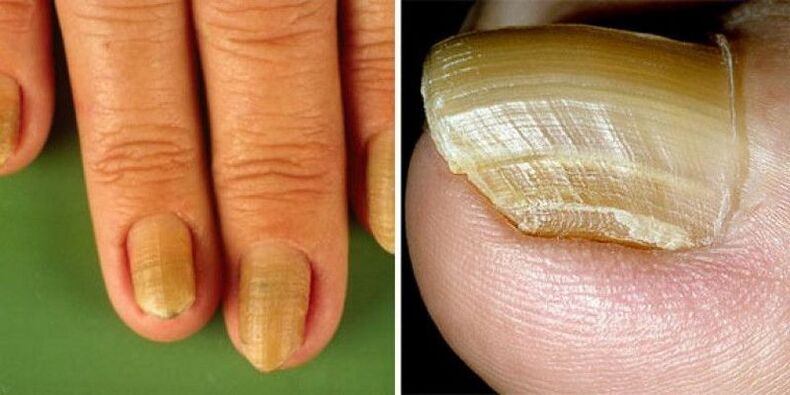
Hypertrophic changes occur in both arms and legs. The nail hardens, becomes transparent, takes on a yellowish-gray color, and over time may separate from the base of the nail. This is considered a manifestation of endocrine disease, although the main cause of scleronychia is still unknown.
Onychogryphosis
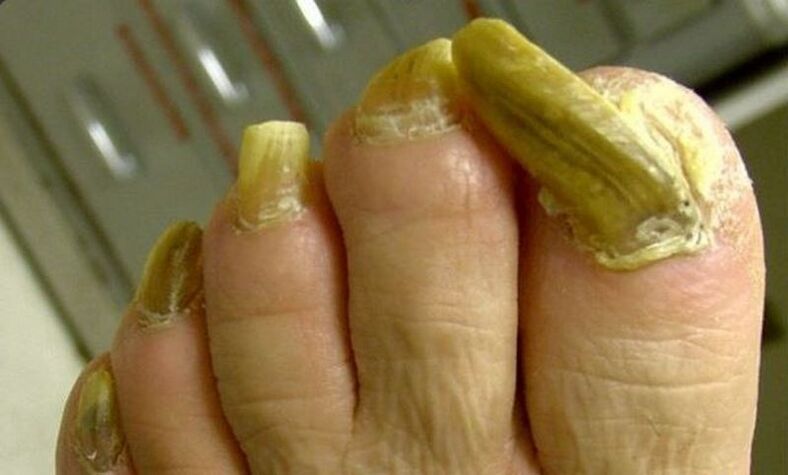
Another name is "bird's claw". It can develop as a result of frostbite or severe bruising.
The nails become dense and uneven, take on an unnatural color from gray-yellow and brown to almost black. In addition, the free edge is bent, like a bird, or twisted into a spiral.
Treatment consists of softening the nail surface with salicylic paste or ointment; in advanced cases, it can be scraped off or surgically removed.
Onyhauxis
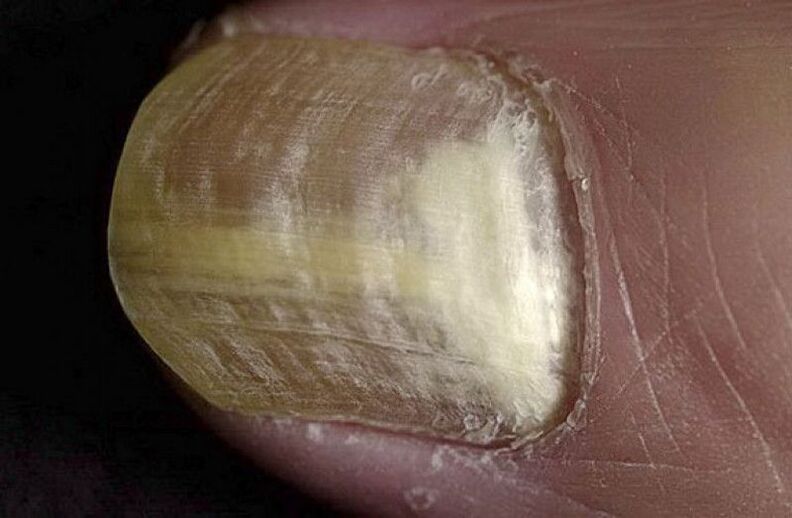
Excessive growth of the subungual cornea, which is accompanied by darkening of the nails and inflammation of the nail folds. It affects 1-2 fingers; in rare advanced cases, it can be observed on all fingers and toes. Usually manifests itself as a result of insufficient nail nutrition in diseases such as:
- diabetes;
- varicose veins;
- atherosclerosis of blood vessels in the lower part of the leg;
- elephant disease.
It can also be caused by injury or low-quality manicure; sometimes onychauxis warns of a lack of certain vitamins and minerals in the body. For correction, drugs that thin and activate blood circulation are prescribed; in case of vitamin deficiency, the menu is enriched with essential nutrients and multivitamins.
Onychomadesis

Sometimes accompanying fungal or bacterial diseases of nails and toenails, often caused by mechanical damage or normal nail biting (onychophagia). The nail bed becomes inflamed, the nail matrix itself darkens and after a short time comes off the finger completely. This happens both from the free edge and from the inside, depending on the cause of the disease.
Treatment aims to improve blood circulation in the affected finger through massage, vitamins and medicines. If onychomadesis is of infectious origin, the disease that caused it is treated accordingly. In addition, they try to protect the exposed nail bed from fungi and bacteria, otherwise the affected nail will not grow back.
Beau's transverse groove (Beau-Reil line)
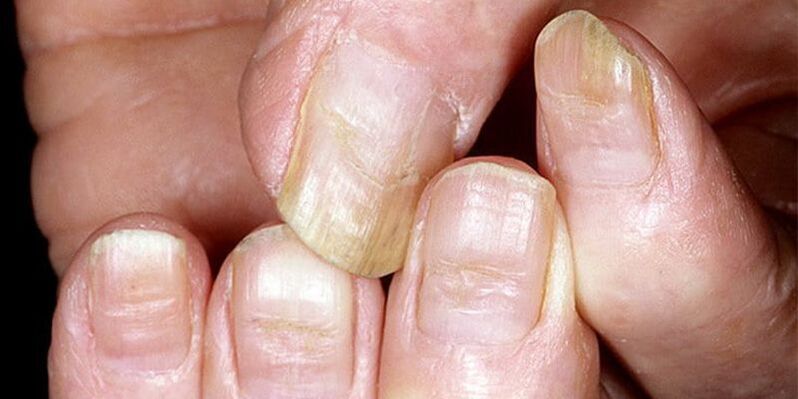
They appear due to the inhibition of the nail growth zone due to metabolic disorders, injury or unsuccessful manicure, and often appear in children in response to viral infections. Depending on the course of the disease, there may be one or several, which make the nails look wavy (see photo above).
The Bo line looks like an arc that spans the entire surface of the nail from one side roller to the other. The depth can reach 1 mm and directly depends on the severity of the disease. In severe cases, the groove can tighten the nail so that its free edge stops receiving sufficient nutrition, gradually atrophies and leaves the finger.
After eliminating the factors that trigger the appearance of Bo lines, the nail defect will disappear on its own over time.
Longitudinal grooves
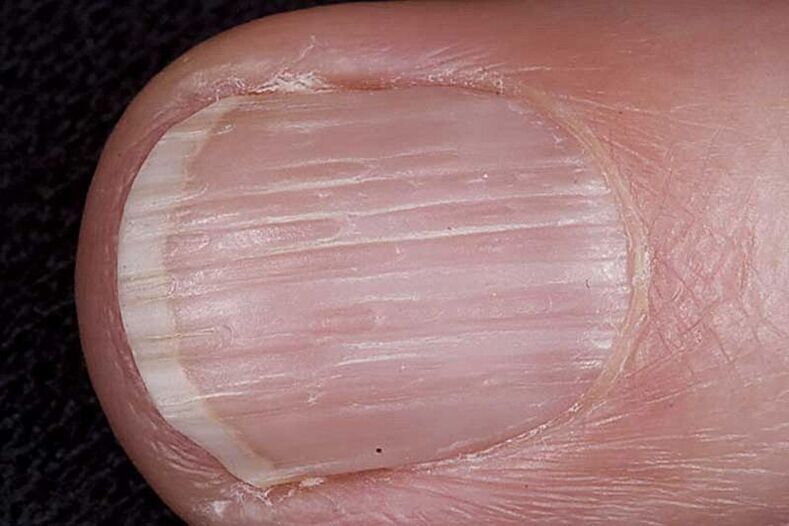
They are also called vertical. Possible reasons for their appearance:
- age-related changes;
- diseases of the nervous system;
- psoriasis;
- spinal cord damage;
- gout;
- defects in intestinal or pancreatic function;
- rheumatoid arthritis;
- lichen planus;
- diseases of the cardiovascular system;
- damage to the root of the nail plate;
- iron and vitamin B12 deficiency.
After eliminating the cause, the nail itself returns to its original appearance. During treatment or with age-related changes, to improve the appearance, longitudinal grooves can be hidden under a layer of special varnish.
Leukonychia
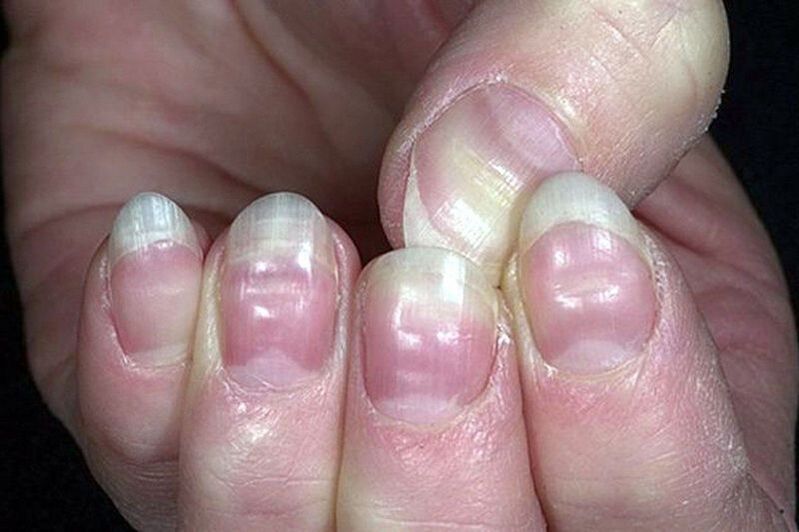
White spots appear on the nails. Their shape, quantity and location vary with different body dysfunctions. The appearance of spots on the nails indicates the presence of the following problems:
- protein deficiency;
- lack of vitamins (especially C, E, A) and trace elements (calcium, zinc, iron);
- fungi;
- disruption of metabolic processes in the body;
- heavy load on the nervous system: stress, depression, anxiety;
- intestinal problems;
- frequent contact with household chemicals, low-quality varnish;
- disorders of the cardiovascular system;
- kidney disease;
- skin disease.
If there is no suspicion of disease, then this defect can be corrected independently. It will be enough to set a schedule of rest and work, supplement the diet with foods with important nutrients, and wear gloves when in contact with household chemicals.
Onychodystrophy
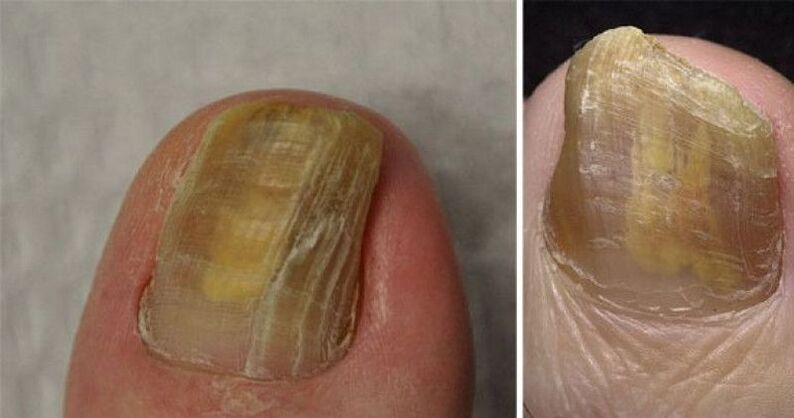
Changes occur in the periungual fold, nail plate and bed. Nails become less transparent, their thickness changes, and growth slows down. It is also possible that longitudinal grooves may appear and the color may change to yellow-grey. The causes of this nail disease may be:
- mycoses;
- injury;
- skin diseases (psoriasis, eczema, lichen planus);
- avitaminosis;
- chronic diseases of the endocrine system;
- problems with the heart and lungs;
- interaction with alkalis, acids, chemicals with unprotected hands.
Onycholysis
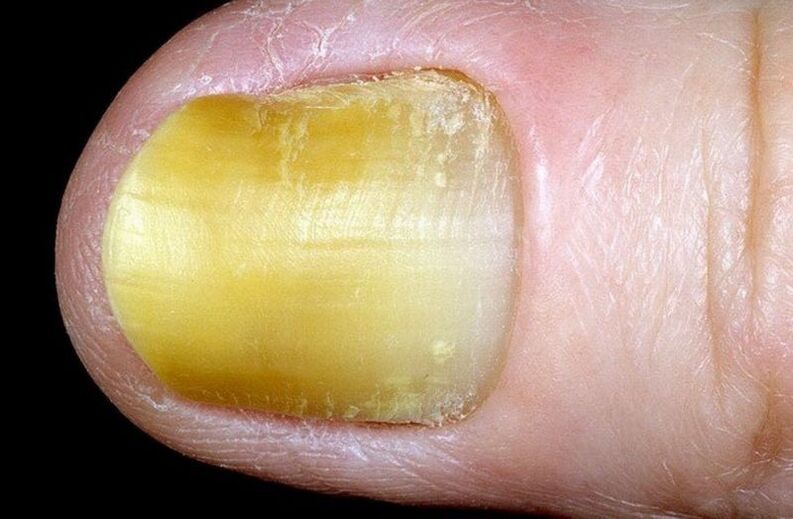
Refers to onychodystrophy. With onycholysis, a change in the color of the nail plate from yellow to brown is observed. The nail becomes brittle and moves partially or completely from its bed. Possible reasons:
- fungal and bacterial infections;
- skin disease;
- taking antibiotics;
- dysbacteriosis;
- injury;
- contact with allergens;
- some chronic diseases.
Ingrown toenails
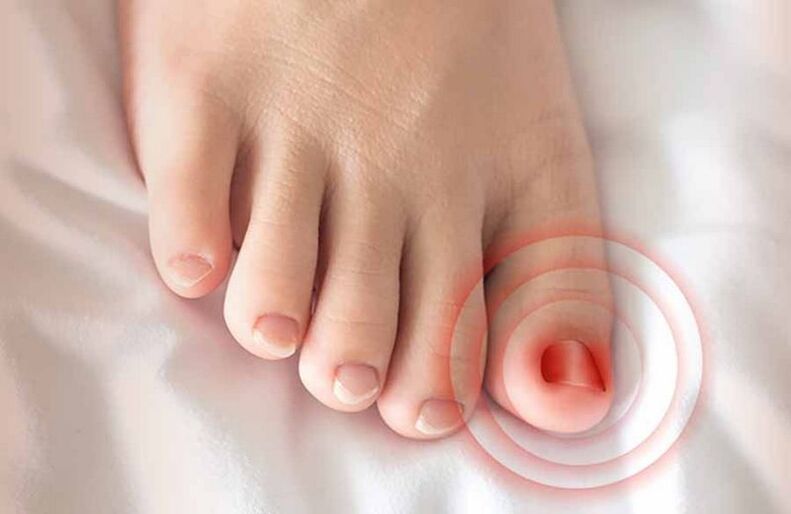
This type of toenail disease occurs because the main cause is shoes that are too tight and improper trimming. The nail grows into the lateral cushion, which causes swelling of the toe, pain when walking, and inflammation of the soft tissue.
In mild cases, you can survive with foot baths and softening compresses; in advanced cases, only a surgeon can correct an ingrown toenail.
Onychorrhexis

Brittleness and fragility of nails, which leads to their separation. It usually accompanies diseases and conditions that cause impaired microcirculation in the fingers. A harsh diet and frequent contact with an alkaline environment may also be the cause. Onychorrhexis is very rare in the feet.
Anonychia
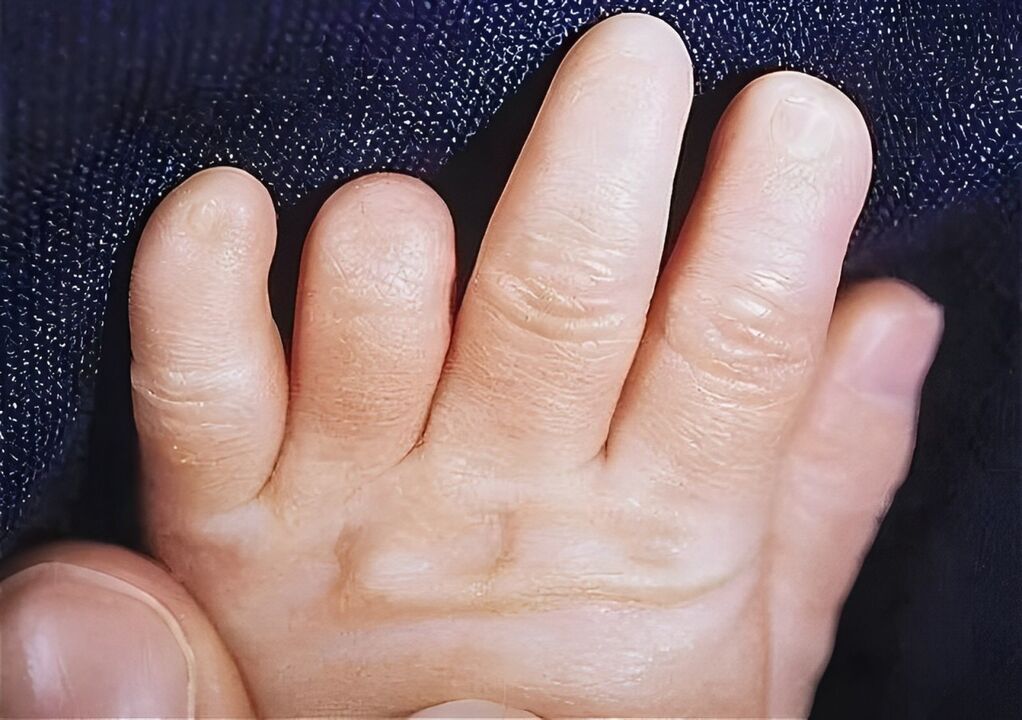
Lack of nail plate. It can be either congenital or acquired after an injury, an organic nervous system disease, or some dermatosis.
Koilonychia
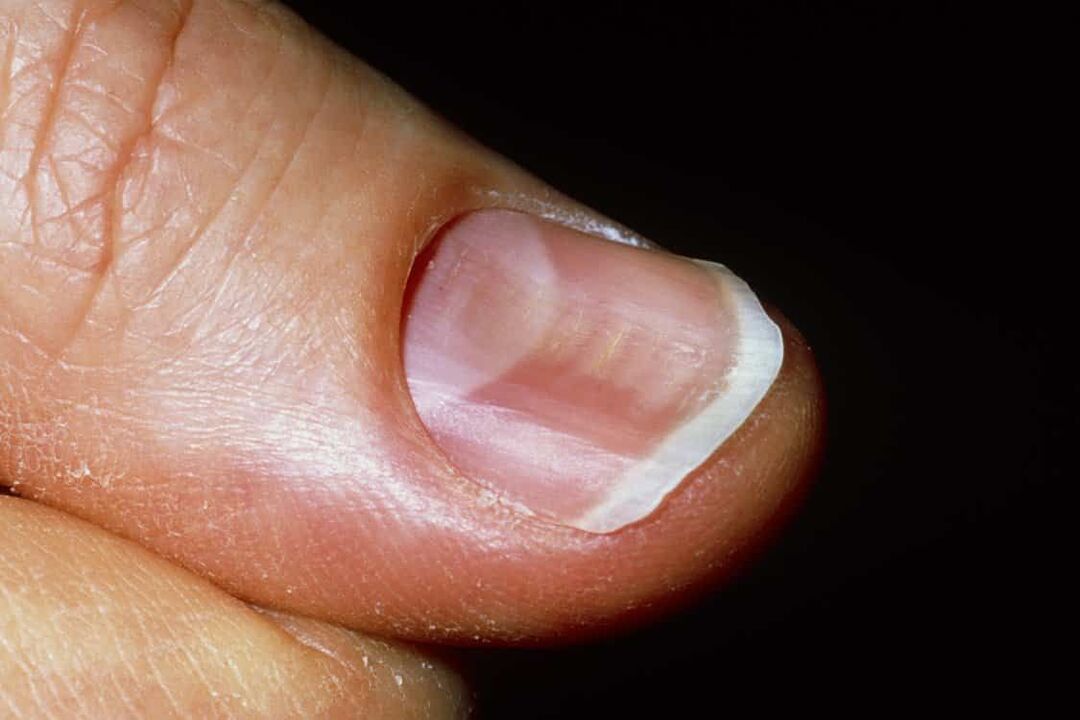
The nails become thinner and become concave like a spoon. Possible reasons:
- descent;
- anemia;
- the effects of continuous destruction of acetone or household chemicals;
- some infections;
- Improper manicure.
Micronychia
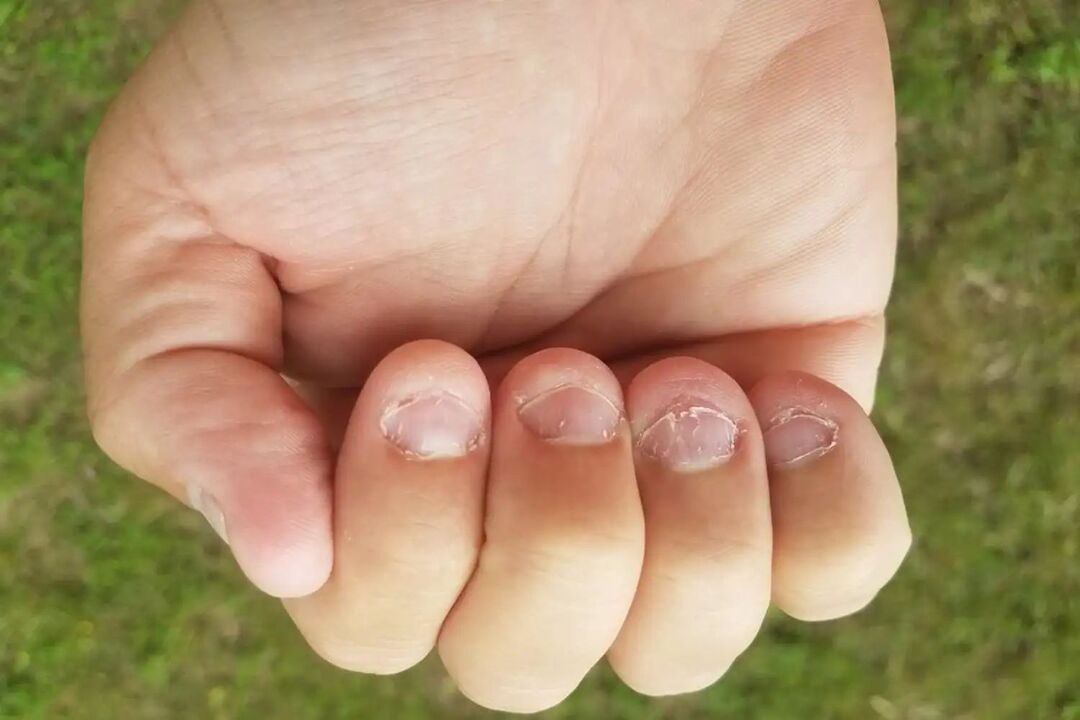
Minor pathology, shortened nails. It may be congenital or develop as a result of nail biting. Micronychia also sometimes manifests itself as a symptom in diseases such as:
- progressive scleroderma;
- Trenaunay syndrome;
- flat angioma;
- Pure epilepsy;
- malnutrition on hand.
Onychoschisis

Transverse separation of the nail plate. It often occurs due to the aggressive influence of substances in household chemicals and decorative nail products. It often occurs in representatives of professions with increased mechanical stress on the fingers: musicians, printers. Onychoschisis also appears with vitamin deficiency.
Onychomycosis
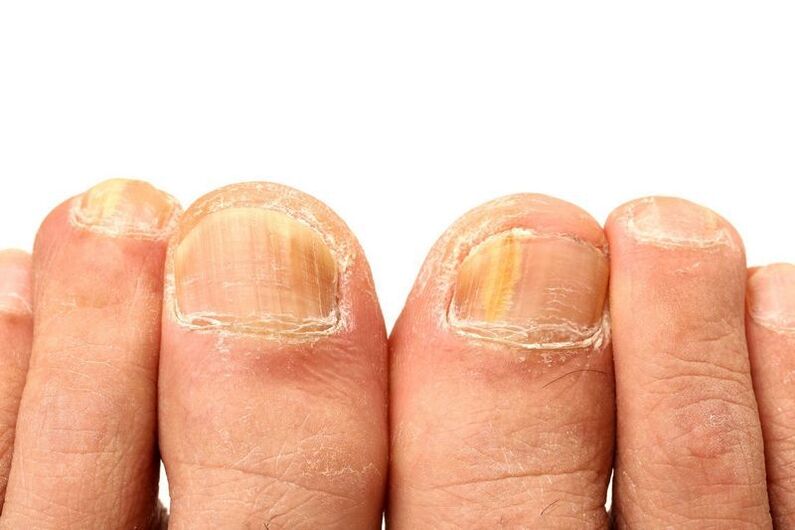
Fungal nail disease can most often be found on the feet and there are many types, so for more effective treatment it is better to consult a dermatologist.
You can get fungus anywhere, but it needs a warm, moist, dark environment to thrive, which is why it mainly affects the feet. The disease takes a long time to develop, the first symptoms may appear only after a few months.
First, itching is felt in the infected area, the skin begins to dry and peel. Next, the nail itself is affected, its color changes, cracks appear on the surface and a bad smell appears. If left untreated, over time mycosis will spread throughout the body and cause various types of complications.
Gapalonychia
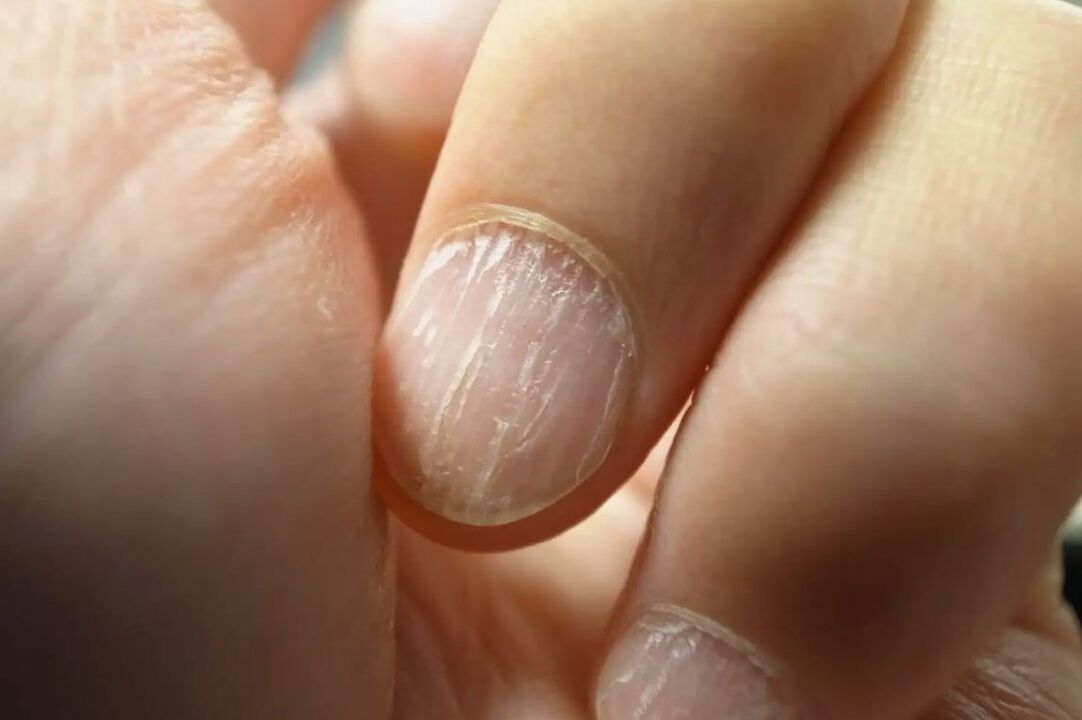
The nail plate becomes soft, cracked and split. It occurs due to diseases of the endocrine system, metabolic disorders in the body, and frequent exposure to aggressive chemicals.
Platonychia
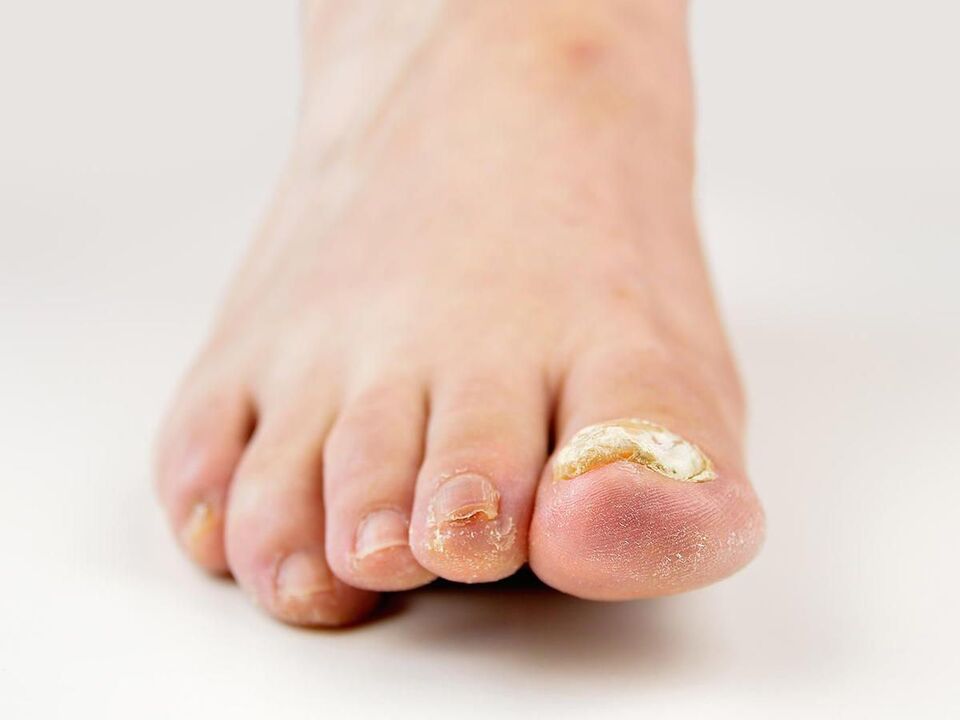
The nail surface is completely flat (see photo). It can be congenital or acquired as a result of professional activity. Also, some chronic inflammatory processes can trigger this defect.
Prevention
The following list of simple rules will help you prevent many possible toenail and toenail diseases.
- You can't bite your nails.
- File your nails with a glass or cardboard file.
- Manicure should be done on steamed hands, this reduces the risk of microtrauma and, as a result, infection of the wound.
- If you use salon services to care for your nails, make sure the technician disinfects the tools before use.
- Dry your hands and feet.
- Your diet should contain foods that contain enough vitamins and minerals.
And most importantly, do not be lazy to contact the doctor and undergo additional examinations by specialists. The earlier the disease is detected, the greater the chance of defeating it.



























